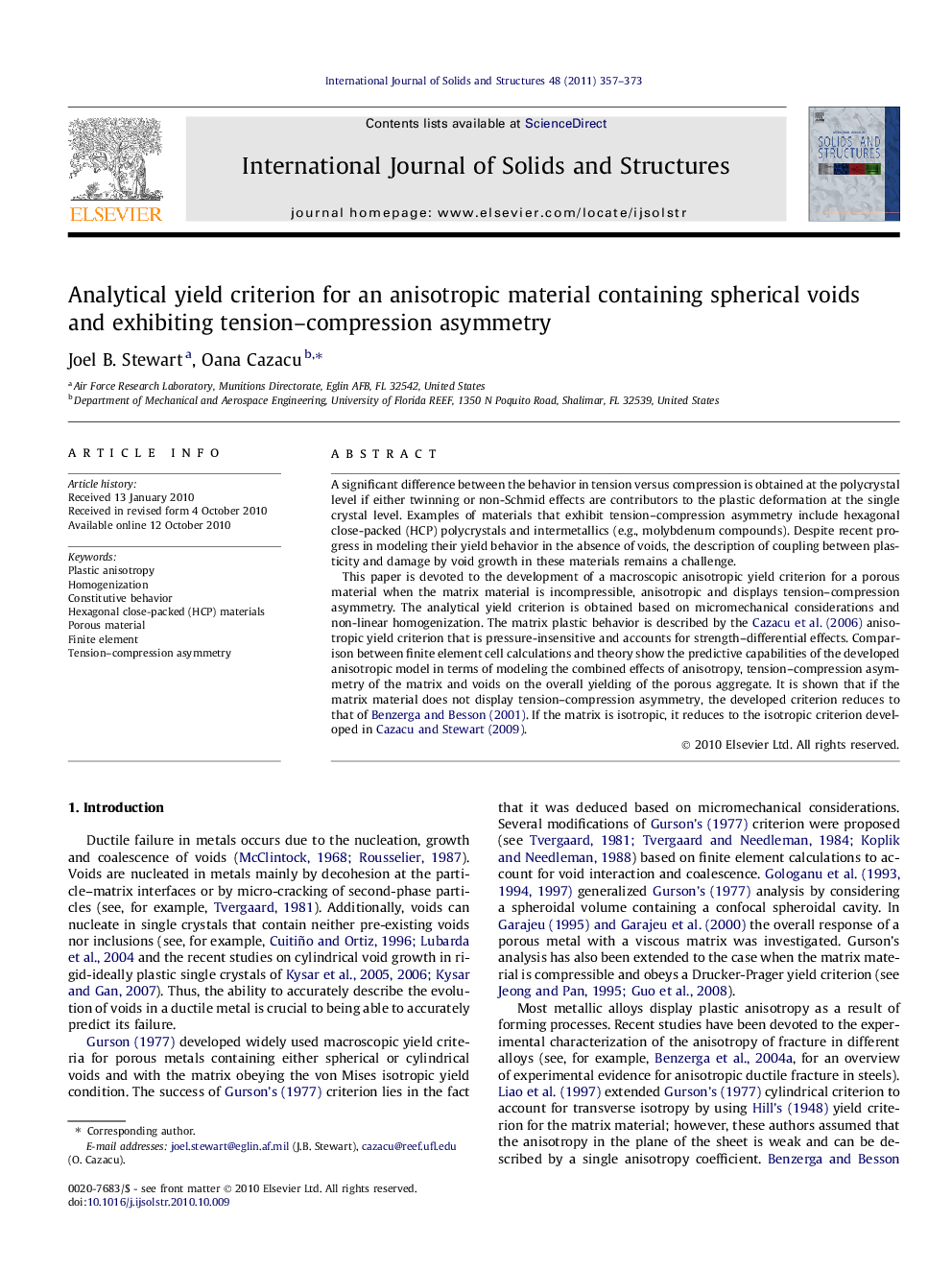| Article ID | Journal | Published Year | Pages | File Type |
|---|---|---|---|---|
| 278734 | International Journal of Solids and Structures | 2011 | 17 Pages |
A significant difference between the behavior in tension versus compression is obtained at the polycrystal level if either twinning or non-Schmid effects are contributors to the plastic deformation at the single crystal level. Examples of materials that exhibit tension–compression asymmetry include hexagonal close-packed (HCP) polycrystals and intermetallics (e.g., molybdenum compounds). Despite recent progress in modeling their yield behavior in the absence of voids, the description of coupling between plasticity and damage by void growth in these materials remains a challenge.This paper is devoted to the development of a macroscopic anisotropic yield criterion for a porous material when the matrix material is incompressible, anisotropic and displays tension–compression asymmetry. The analytical yield criterion is obtained based on micromechanical considerations and non-linear homogenization. The matrix plastic behavior is described by the Cazacu et al. (2006) anisotropic yield criterion that is pressure-insensitive and accounts for strength–differential effects. Comparison between finite element cell calculations and theory show the predictive capabilities of the developed anisotropic model in terms of modeling the combined effects of anisotropy, tension–compression asymmetry of the matrix and voids on the overall yielding of the porous aggregate. It is shown that if the matrix material does not display tension–compression asymmetry, the developed criterion reduces to that of Benzerga and Besson (2001). If the matrix is isotropic, it reduces to the isotropic criterion developed in Cazacu and Stewart (2009).
